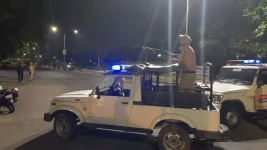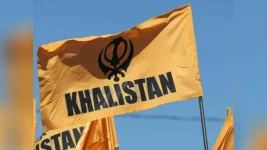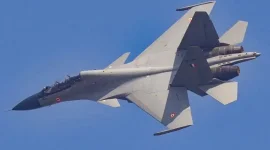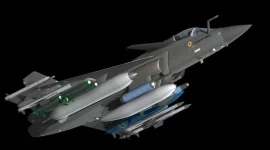- Views: 713
- Replies: 14

India's aerospace giant, Hindustan Aeronautics Limited (HAL), is taking decisive steps towards technological advancement with a strategic investment in cutting-edge CNC (Computer Numerical Control) machines from leading manufacturers DMG and Hermle.
This modernization drive holds the key to transforming the nation's fighter jet production capabilities, but challenges remain in fully realizing its potential.
The Need for Speed and Precision
HAL's ambitious endeavors in indigenous fighter aircraft programs, such as the Tejas Mk1A and the Advanced Medium Combat Aircraft (AMCA), necessitate both precision and speed.The newly acquired CNC machines excel in these areas, promising higher-quality components with shorter lead times. This upgrade is essential for streamlined production cycles, crucial as HAL faces a growing backlog of aircraft orders.
Game-Changing Capabilities
The 5-axis capabilities of the DMG machines introduce a new dimension to manufacturing flexibility, allowing HAL to produce complex, aerodynamically optimized parts with greater ease.Furthermore, the integration of a mill-turn machine and a pallet changer empowers HAL to streamline processes. These machines can complete a wider range of machining tasks within a single setup, leading to significant efficiency gains.
Bolstering India's Self-Reliance
This push for modernization has a direct impact on India's aspiration for self-reliance in defense manufacturing.Advanced CNC technology becomes indispensable when producing sophisticated components needed for indigenous fighter jets.
HAL's investment underscores the nation's resolve to reduce reliance on foreign suppliers and achieve greater control over its defense production timelines.
Challenges and Opportunities
While the new CNC machines signify progress, the reality is that HAL requires a greater quantity of this machinery to truly transform its production capacity. The current lead times of 8-10 months for machine acquisitions pose a bottleneck.To accelerate the pace of modernization, HAL may need to explore alternative suppliers with shorter delivery windows, ensuring consistent expansion.
Conclusion
HAL's modernization drive represents a bold step towards transforming India's fighter jet production landscape. This investment signifies a recognition of the critical role advanced manufacturing plays in securing the future of India's aerospace industry.Addressing the need for larger quantities of CNC machinery and optimizing procurement processes will be integral to fully realizing the benefits of this technological leap and solidify India's position as a major aerospace power.




